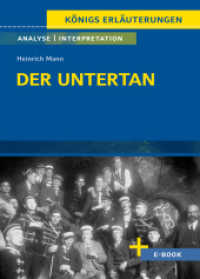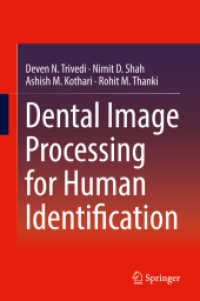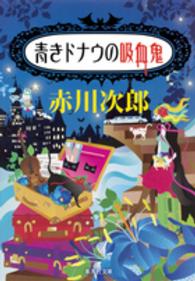Full Description
"This unique contribution is both a wonderful source of teaching ideas and a reminder that authentic learning involves engaging experiences that encourage inquiry."
—Dan Thompson, Assistant Professor of Education
Penn State University
"Educators are always looking for interesting activities that challenge students to think beyond the ordinary. The authors have done a great job of compiling a variety of activities for different subject areas."
—India Meissel, Social Studies and English Teacher
Lakeland High School, Suffolk, VA
Encourage critical thinking while teaching meaning through learning experiences!
Learning in secondary school classrooms involves much more than students reciting the "right" answers on high-stakes tests. This activity-packed book encourages educators to move beyond traditional models of teaching and learning and provides them with the tools for getting started.
100 Experiential Learning Activities for Social Studies, Literature, and the Arts, Grades 5-12 focuses on using active learning to engage students in critical thinking and reflection about complex content knowledge in the humanities and the arts. Through easy-to-use matrices, the authors link lessons investigating history, economics, literature, music, and visual arts to McREL, NCTE, and NCSS standards. The 100 activities address significant social issues, including social justice, culture, language, and diversity. Teachers can emphasize comprehension, encourage creative thinking, and promote transfer across disciplines to help students:
Explore primary sources to uncover practical and relevant information
Construct careful arguments to integrate new learning with prior knowledge
Question deeply held assumptions to arrive at authentic understandings
Approach new ideas with confidence
Take your students through meaningful learning experiences and make knowledge come alive!
Contents
Preface
Acknowledgments
About the Authors
Introduction
Matrices
NCSS
McRel
1. Creating a Language
2. Point-of-View Pictures
3. Rosie the Riveter
4. Columbus and the Discovery of the New World
5. How Is History Portrayed? Columbus and the Discovery of the New World
6. Spanglish
7. Slave Narratives
8. The Paradox of Theseus's Ship
9. Creating an Personal Historical Timeline
10. Poems Inspired by Art
11. Art Inspired by Poetry
12. The Paradox of Infinity
13. Point of View and Cultural Perspectives
14. Final Flight of Yamamoto: Should We Have Struck Back?
15. Double Consciousness: Examining Oneself and the Concept of Privilege
16. The Fable of the Blind Men and the Elephant
17. Creating a System of Writing
18. Magic and Technology
19. The Birthday Paradox
20. Mobius Strip and Different Perspectives
21. Thinking Out of the Paradigm: The Columbus Egg Problem
22. Arthur C. Clarke's First Law
23. Is Technology Neutral?
24. Writing a Letter to the Editor
25. Science Fiction and Literature as the Future
26. Creating a Political Broadside
27. Exploring the Great Depression
28. Family Photographs
29. Women's Rights
30. Today in History
31. Photographs of the Farm Security Administration
32. Primary and Secondary Sources
33. Thinking Outside the Box
34. Riddles
35. Exploring Community Festivals
36. Rebuses and Concrete Writing
37. Mnemonics
38. Designing a Memorial
39. Stepping Into a Painting
40. Japanese Internment During World War II
41. ASCII Code
42. Protest Songs
43. Inaugural Presidential Address
44. Portals to the World
45. Stories From Childhood
46. Round-Robin Stories
47. Writing Grab Bag
48. Using Census Data
49. Explore a Favorite Artist
50. What Makes a Good Life?
51. Creating an Ethical Will
52. Written in Stone
53. Photographic Timeline
54. 1900
55. Ninety-Five Theories
56. Analyzing the New England Primer (1692)
57. Slavery in the Constitution?
58. How Crowded Was the Middle Passage?
59. The List of Creepy Coincidences
60. Sacrifices
61. The Classroom Missile Crisis
62. Listening to Sources?
63. Personal Timelines: A Puzzle?
64. Movies as a Window Into History
65. Writing Their Own Script
66. Write Obituaries
67. Take a Trip to Mars
68. CIA Fact Book
69. Talking to an Expert
70. Famous Last Words
71. Columbus and Culture
72. Collage
73. Making Models
74. The World Without Human Life
75. Creating the Scene for a Story
76. How Long Is a Thousand Years?
77. Creating a Dadaist Poem
78. War Stories
79. Editorial Cartoons as Social Commentary
80. True or False
81. Creating Codes
82. What Is the Law?
83. When Is the Law the Law?
84. Symbols in Our Culture
85. Symbols on Our Money
86. What's on the Stamp?
87. Place Names
88. Art Museums of the World
89. America's Attic
90. Written in Stone
91. Photographic Community Timeline
92. The Sounds of Silence
93. What's in a Name?
94. More What's in a Name?
95. Crazy Inventions
96. Idioms
97. Famous Inventions and Their Impact on the World
98. What Is in Good Taste?
99. Creating a Self-Portrait
100. Found Art
References








